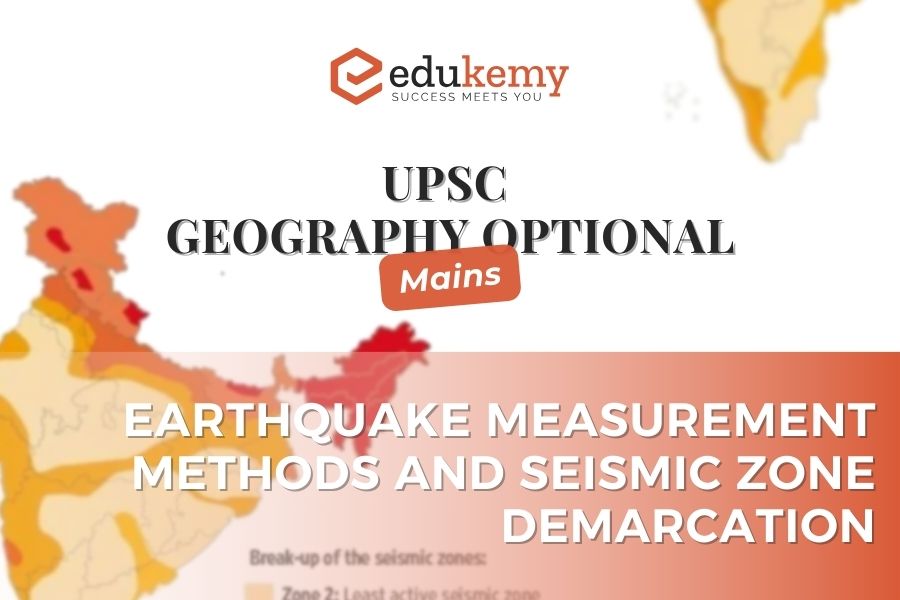
Explore the methodologies used to quantify the intensity and magnitude of earthquakes, essential for understanding their impact and assessing seismic hazards. Various instruments, such as seismometers, record ground motion, providing data on the intensity and duration of shaking. Magnitude, a measure of the energy released at the earthquake’s source, is determined using Richter or moment magnitude scales. Intensity, on the other hand, evaluates the effects of shaking at specific locations, relying on descriptive scales like the Modified Mercalli Intensity Scale. Seismic zones, regions prone to frequent earthquakes, are demarcated based on historical seismic activity, tectonic plate boundaries, and geological features. Delve into the techniques of earthquake measurement to comprehend the complexities of seismic events and their spatial distribution.
Contents
Answer:
Introduction:
An earthquake is a natural phenomenon characterized by the sudden release of energy in the Earth’s crust, resulting in the shaking and vibration of the ground. It is caused by the movement of tectonic plates beneath the Earth’s surface.
Body:
Methods of Measuring Intensity:
- Mercalli Intensity Scale: This scale measures the intensity of shaking experienced at a particular location based on observed effects on people, buildings, and the environment. It is subjective and varies from place to place within the affected area.
- Modified Mercalli Intensity (MMI): An adaptation of the Mercalli Intensity Scale, MMI accounts for modern building practices and urbanization. It provides a more standardized way of measuring earthquake intensity.
- European Macroseismic Scale (EMS): Used primarily in Europe, this scale assesses earthquake intensity based on observed effects and damage to buildings and infrastructure.
Methods of Measuring Magnitude:
- Richter Scale: Developed by Charles F. Richter in 1935, this scale measures the magnitude of an earthquake based on the amplitude of seismic waves recorded by seismographs. It is logarithmic, meaning each whole number increase represents a tenfold increase in amplitude.
- Moment Magnitude Scale (Mw): This scale measures the total energy released by an earthquake, taking into account the area of the fault rupture and the displacement of the Earth’s crust.
- Surface Wave Magnitude (Ms): Surface waves are the largest and slowest seismic waves, and this scale measures earthquake magnitude based on the amplitude of these waves.
Demarcation of Seismic Zones:
- Seismic zones are demarcated based on various factors including historical earthquake data, active fault distribution, and tectonic settings. These zones are crucial for assessing earthquake hazards, developing building codes, and planning land use.
- For example, the United States and India both have seismic zoning maps that classify regions into different hazard levels based on the likelihood of experiencing ground shaking. These maps aid in emergency preparedness and risk mitigation strategies.

Conclusion:
In conclusion, the measurement of earthquake intensity and magnitude involves various scales and methods tailored to assess different aspects of seismic activity. Seismic zoning plays a vital role in identifying high-risk areas and implementing measures to minimize the impact of earthquakes on human lives and infrastructure.
In case you still have your doubts, contact us on 9811333901.
For UPSC Prelims Resources, Click here
For Daily Updates and Study Material:
Join our Telegram Channel – Edukemy for IAS
- 1. Learn through Videos – here
- 2. Be Exam Ready by Practicing Daily MCQs – here
- 3. Daily Newsletter – Get all your Current Affairs Covered – here
- 4. Mains Answer Writing Practice – here

